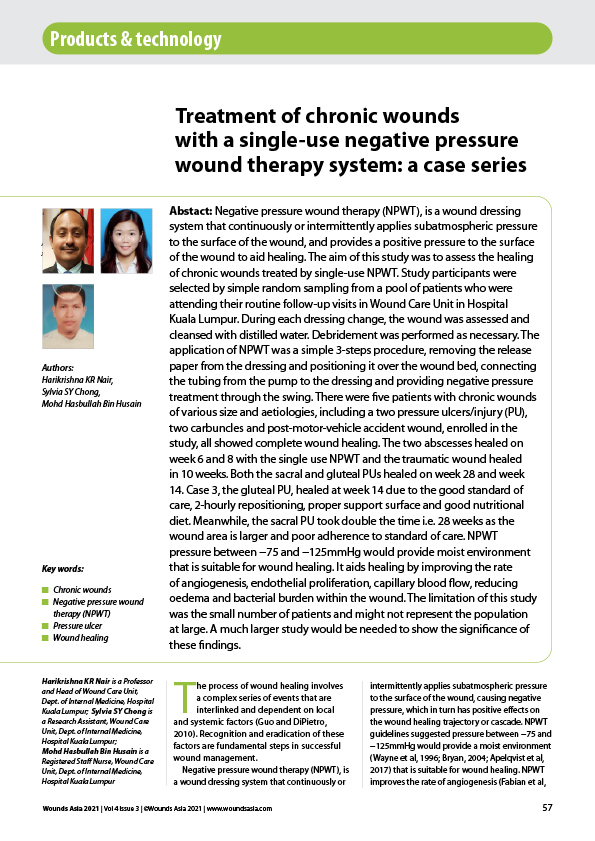Negative pressure wound therapy (NPWT), is a wound dressing system that continuously or intermittently applies subatmospheric pressure to the surface of the wound, and provides a positive pressure to the surface of the wound to aid healing. The aim of this study was to assess the healing of chronic wounds treated by single-use NPWT. Study participants were selected by simple random sampling from a pool of patients who were attending their routine follow-up visits in Wound Care Unit in Hospital Kuala Lumpur. During each dressing change, the wound was assessed and cleansed with distilled water. Debridement was performed as necessary. The application of NPWT was a simple 3-steps procedure, removing the release paper from the dressing and positioning it over the wound bed, connecting the tubing from the pump to the dressing and providing negative pressure treatment through the swing. There were five patients with chronic wounds of various size and aetiologies, including a two pressure ulcers/injury (PU), two carbuncles and post-motor-vehicle accident wound, enrolled in the study, all showed complete wound healing. The two abscesses healed on week 6 and 8 with the single use NPWT and the traumatic wound healed in 10 weeks. Both the sacral and gluteal PUs healed on week 28 and week 14. Case 3, the gluteal PU, healed at week 14 due to the good standard of care, 2-hourly repositioning, proper support surface and good nutritional diet. Meanwhile, the sacral PU took double the time i.e. 28 weeks as the wound area is larger and poor adherence to standard of care. NPWT pressure between −75 and −125mmHg would provide moist environment that is suitable for wound healing. It aids healing by improving the rate of angiogenesis, endothelial proliferation, capillary blood flow, reducing oedema and bacterial burden within the wound. The limitation of this study was the small number of patients and might not represent the population at large. A much larger study would be needed to show the significance of these findings.








